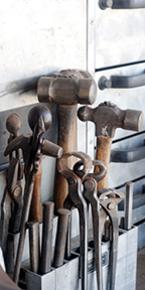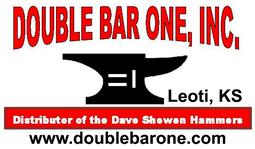KFA | Kansas Farriers Association Services
The Kansas Farriers Association offers tools to guide farriers and horse owners.
Lost Shoes
Lost shoes are an aggravation that can haunt many horse owners. It seems to be of Murphy's Law that the shoe will come off just prior to that important equestrian event and there is no time to get a farrier out, assuming that one can be found quickly…..but then Murphy was a horse owner, wasn't he?
Springtime and early summer is when we like to get our horses out to be ridden. We take care of the routine veterinary appointment, have our horses shod, and begin to work them back into condition. It is also the most likely time to have thrown shoes and sprung heels. There are several good reasons why this occurs.
The most obvious reason is wet weather. Many people blame the mud although this may not be as much of a factor as believed. Rather, it is the moisture content in the hooves that make them softer, more pliable. It is a little more difficult to hold nails in a soft hoof.
Other reasons to consider; some horses like to paw, especially around fences. Pastures with tall thick grass or weeds can catch and pull on the shoes. Horses that are out of shape or that are green may ride in a more uncollected manner. Certain disciplines are hard on shoes, such as racing or events that call for twisting and turning at various rates of speed.
Conformation may cause some horses to travel in such a manner that they will catch the front shoes with the hind. All horses are as different as their riders, thus giving a whole array of possibilities to consider when shoe pulling occurs. Lost shoes cannot always be avoided.
Well balanced hooves are a result of good maintenance. If the horse is not trimmed or shod on a regular basis, the hooves are likely to be flared and uneven. A hoof may grow with one side longer than the other, in which case the horse may not travel correctly, making it easier to pull a shoe. It may take two or three settings to get an imbalance resolved.
Another situation that can develop from a lack of routine hoof care is under slung heels, usually associated with too long of a toe. If the condition is allowed to progress, the quarters of the hoof become stressed and start to break up or split. Such breaks or splits can badly distort the feet. This problem puts extra strain on the flexor tendons which are located in the back of the legs. The usual remedy for this is to set shoes with heels that come back under the leg far enough to support the horse. Frustration can occur in these cases because there may be some extra shoe sticking out in back to be caught and pulled off.
Too much time between sets or trims can be detrimental to keeping the horse sound, especially if the horse has poor leg or hoof conformation.
Some people measure a farrier's worth by the amount of time a shoe stays on. Although it is desirable to be able to keep shoes on for awhile, after a certain amount of time, the "good horseshoeing job" starts to deteriorate and it is time for a reset. Many people tend to go a little too long between resets and their horses' feet start to look a bit "shoddy", even though the original work was of good quality.
It should be of no surprise that reputable farriers prefer customers who keep a respectable schedule to those who habitually wait too long to have their horses' feet cared for. Maintaining a regular schedule will help keep your horse sound, lead toward a good farrier/horse owner relationship and reduce the risk of having lost shoes.
William “Toby” Tobler, CJF
HORSE OWNER TIPS for a Positive Trimming or Horse Shoeing Experience
- Work with your horse on picking up his feet and standing still, don't expect the farrier o do it for you.
- Clean out your horses hooves every time you work with him.
- Have horse caught prior to farrier arriving or in a pen close by.
- If it's muddy, wash your horses legs in advance so the horse can be DRY when farrier arrives.
- When farrier is under your horse, do not pester your horse by playing with him or swinging the lead rope.
- Fly spray isn't always enough. Help your horse keep the flies off manually while holding him.
FARRIER TIPS for a Positive Trimming or Horse Shoeing Experience
- Return calls in a timely manner.
- Be on time for appointments or contact client to let them know when you will be arriving.
- Continue learning (events, reading, job shadowing, etc)



